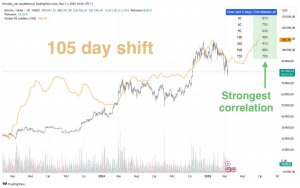Is Your Team a ‘Smart Team’ or a ‘Dumb Team’?

Every emerging leader will be interested in what makes a team work and what makes a team falter. To this end, Robbins and Judge (2017) describe two studies in which the researchers examine what characteristics “smart teams” have and what characteristics “dumb teams” have.
Both studies conclude that there are two team characteristics correlated with successful decision-making: equal contributions from team members and a high rating on the ability to read complicated emotions. The first study also concluded that smart teams included more women, but it is suggested that this characteristic led to the ability to read emotions better.
In my experience, I have found these two characteristics are paramount, though I would include diversity of perspective as another factor of success.
First, the notion of equal contributions is a universal characteristic. We see it in business as we see it in sports. In practically every team sport, we are presented with the same story of a team with one star who dominates the opponents, scores at will, and goes on to become MVP, but, in the end, they are always beaten by a more well-rounded team.
This is in part the reason why The Triangle Offense has been so successful in basketball—it allows everyone on a team to contribute (Holmes, 2017). Second, there is no doubt that reading complex emotions helps a team function properly. As Daft (2008) explains, Emotional Intelligence is important especially in the modern business world because relationships are so integral. Inasmuch as leadership is the stewardship of relationships, it is crucial for the leader to have self-mastery and be able to connect with subordinates with discretion and empathy.
Beyond these two key elements to a team, I have found that diversity of perspective also plays a role in the success of a team. These days, it can almost be taken for granted that team members’ perspectives will be diverse. But, it is easy to fall into a trap of likemindedness, especially if the functions of the team members are all alike or if the hiring manager has prefers certain personality types (Belbin, n.d.).
I have formed and led teams that were made of individuals who largely shared my same personality type. This helps in productivity and efficiency, but it leads to myopia and can lead to out group behavior by those who do not fit in the mold.
References
Daft, R. L. (2008). The leadership experience. (4th Ed.). Mason, OH: Thomson South-Western. ISBN13: 9780324539684
Furnham, A., Steele, H., Pendleton, D. (September, 1993). A psychometric assessment of the Belbin Team-Role Self Perception Inventory. Journal of Occupational and Organizational Psychology Vol. 66, Issue 3. 245-257.
Holmes, B. (2017). The charcuterie board that revolutionized basketball. Retrieved from http://www.espn.com/espn/feature/story/_/page/enterpriseWarriors/how-steve-kerr-revolutionized-golden-state-warriors-offense-charcuterie-board
Robbins, S.P., Judge, T.A. (2017). Organizational behavior, 17e. Harlow: Pearson Education.







